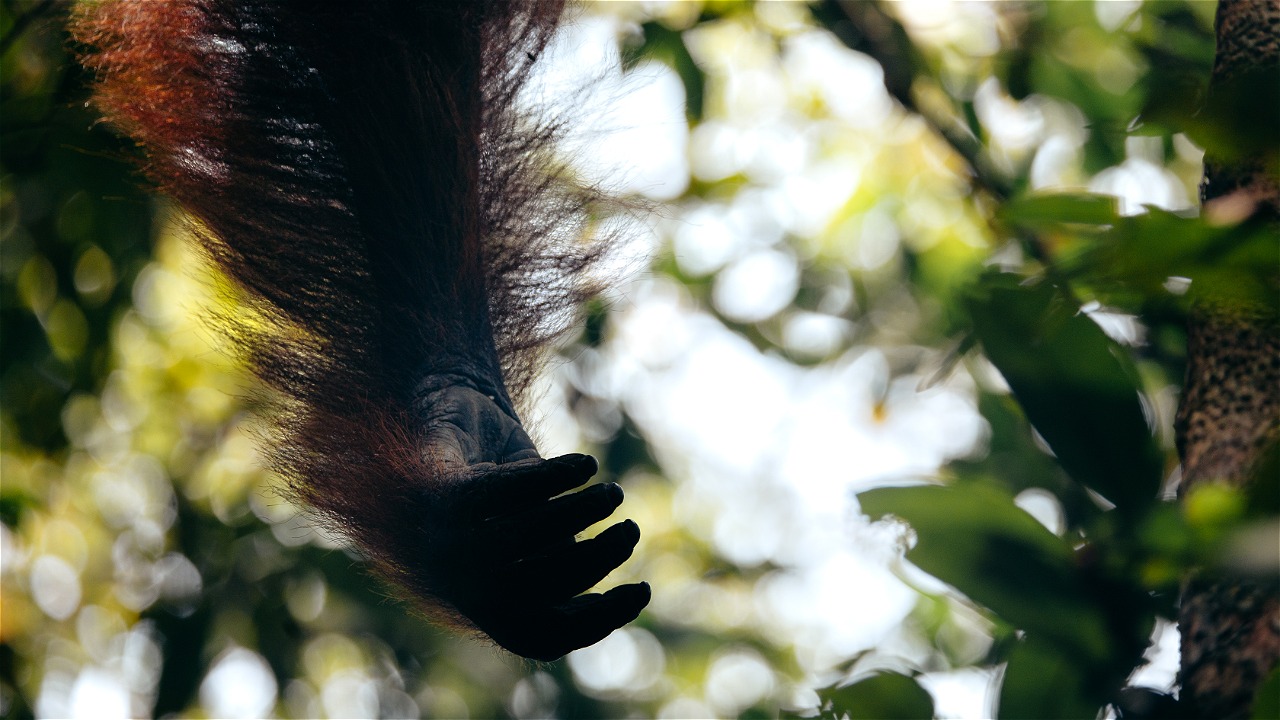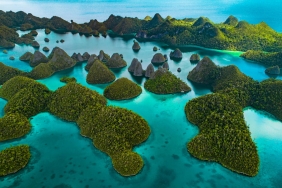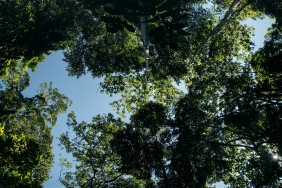HEART OF BORNEO EMERGES AS HOME OF WORLD’S UNIQUE ENDEMIC SPECIES
Embargoed to 00:01 GMT 22 April 2010
Bandar Seri Begawan, Brunei (22/04)-A frog with no lungs, a “ninja” slug firing love darts at its mate, and the world’s longest insect are among new species discovered in the three years since the Heart of Borneo conservation plan was drawn up by the three governments with jurisdiction over the world’s third largest island.
New WWF report Borneo’s New World: Newly Discovered Species in the Heart of Borneo details 123 new species discovered since the February 2007 agreement by Brunei Darussalam, Indonesia and Malaysia to conserve 220,000 km2 of irreplaceable tropical rainforest, designated the Heart of Borneo (HoB).
“As the past three years of independent scientific discovery have proven, new forms of life are constantly being discovered in the Heart of Borneo,” said Adam Tomasek, leader of WWF’s HoB Initiative.
Explorers have been visiting the island of Borneo for centuries, but vast tracts of its interior are yet to be biologically explored, he said. “If this stretch of irreplaceable rainforest can be conserved for our children, the promise of more discoveries must be a tantalising one for the next generation of researchers to contemplate,” he added.
The HoB, an “island within an island” is home to ten species of primate, more than 350 birds, 150 reptiles and amphibians and a staggering 10,000 plants that are found nowhere else in the world, the report says.
The rate of discovery since the foundation of the HoB is more than three new species per month, providing ample justification for the decision to protect the region.
Speaking at the launch of the report during a meeting of the three Heart of Borneo governments, Brunei Darussalam’s Minister of Industry & Primary Resources, the Honourable Pehin Dato Yahya, paid tribute to the dedicated scientists who spent countless hours in challenging conditions to uncover the staggering bio-diversity.
“These amazing new findings highlight the importance of our efforts to implement the HoB Declaration’s bold vision,” he said of the region which also contains the pygmy elephant, orangutan, rhinoceros, and clouded leopard.
With so many new species discovered every month, WWF has made the region a global priority through its Heart of Borneo Initiative. WWF offices in Malaysia and Indonesia support tri-government efforts to conserve and sustainably manage the HoB.
Under the 2007 agreement, the three governments have committed to enhance protected area and trans-boundary management, develop eco-tourism and support sustainable resource management.
“Three years on, the Heart of Borneo Declaration is proving to be an irreplaceable foundation for conservation and sustainable development by establishing a framework for action to protect Borneo’s globally outstanding biodiversity, eco-system services and livelihoods,” WWF’s Tomasek said.
“The discovery of these new species in the Heart of Borneo underlines the incredible diversity of this remarkable area and emphasizes the importance of the commitments already made by Brunei Darussalam, Indonesia and Malaysia to protect it,” he added.
The discoveries also highlight the need to increase financial and technical support to ensure their continued survival, he said.
For further information, please contact:
- Adam Tomasek, Leader, Heart of Borneo Initiative, WWF Tel: +62 21 5761070 Ext. 228, E-mail: atomasek@wwf.or.id
- Christopher Greenwood, International Communications Manager, Heart of Borneo Initiative, WWF Tel: + 60 128281214 E-mail: chris.greenwood@wwf.panda.org
Notes to editors
Researchers who have indicated a willingness to be interviewed on their discoveries are listed below.
- Prof. Dr. Menno Schilthuizen – discoverer of a number of slug species and someone very familiar with the Borneo region, National Museum of Natural History 'Naturalis', P.O. Box 9517; 2300 RA Leiden; the Netherlands, tel. (+31-0)-71-5687769; mobile: (+31-0)-6-22030313; home: (+31-0)-318-300380, E-mail: schilthuizen@naturalis.nl
Webpage:http://science.naturalis.nl/schilthuizen - Also, Dr Gernot Vogel – snake discovery. Society for Southeast Asian Herpetology, Im Sand 3, D-69115 Heidelberg, Germany, Email: gernot.vogel@t-online.de, Web: www.gernot-vogel.de
Video of Kopstein's bronzeback eating a lizard on You Tube (3mins long), click here
Around about the 1min 45sec mark onwards, the snake moves around and reveals more of its coloration. The Natural History Museum in London has a specimen of the longest stick insect and can provide photos and possibly curatorial commentary and other services at commercial prices.
Katie Anderson k.anderson@nhm.ac.uk, Image Sales Executive NHM Image Resources (Photography/Picture Library/Filming) The Natural History Museum , Cromwell Road, London SW7 5BD
About WWF
WWF is one of the world's largest and most respected independent conservation organizations, with almost 5 million supporters and a global network active in over 100 countries. WWF's mission is to stop the degradation of the earth's natural environment and to build a future in which humans live in harmony with nature, by conserving the world's biological diversity, ensuring that the use of renewable natural resources is sustainable, and promoting the reduction of pollution and wasteful consumption.
www.panda.org/media for latest news and media resources





